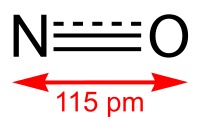
Photo from wikipedia
Nanocrystalline ZnO sponges doped with 5 mol% EuO1.5 are obtained by heating metal-salt complex based precursor pastes at 200-900 °C for 3 min. X-ray diffraction, transmission electron microscopy, and extended X-ray absorption… Click to show full abstract
Nanocrystalline ZnO sponges doped with 5 mol% EuO1.5 are obtained by heating metal-salt complex based precursor pastes at 200-900 °C for 3 min. X-ray diffraction, transmission electron microscopy, and extended X-ray absorption fine structure (EXAFS) show that phase separation into ZnO:Eu and c-Eu2 O3 takes place upon heating at 700 °C or higher. The unit cell of the clean oxide made at 600 °C shows only ≈0.4% volume increase versus undoped ZnO, and EXAFS shows a ZnO local structure that is little affected by the Eu-doping and an average Eu3+ ion coordination number of ≈5.2. Comparisons of 23 density functional theory-generated structures having differently sized Eu-oxide clusters embedded in ZnO identify three structures with four or eight Eu atoms as the most energetically favorable. These clusters exhibit the smallest volume increase compared to undoped ZnO and Eu coordination numbers of 5.2-5.5, all in excellent agreement with experimental data. ZnO defect states are crucial for efficient Eu3+ excitation, while c-Eu2 O3 phase separation results in loss of the characteristic Eu3+ photoluminescence. The formation of molecule-like Eu-oxide clusters, entrapped in ZnO, proposed here, may help in understanding the nature of the unexpected high doping levels of lanthanide ions in ZnO that occur virtually without significant change in ZnO unit cell dimensions.
Journal Title: Small
Year Published: 2022
Link to full text (if available)
Share on Social Media: Sign Up to like & get
recommendations!